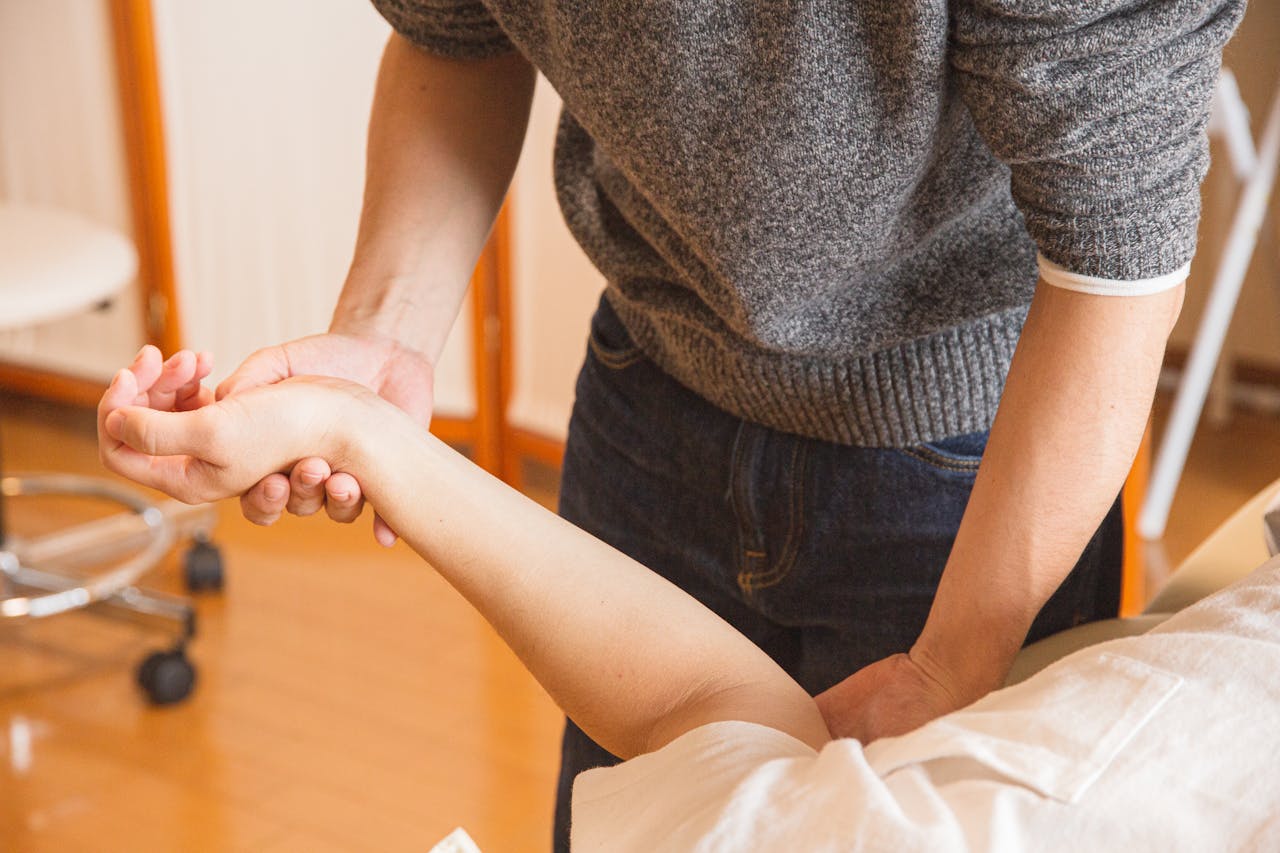Ligament injuries remain a significant challenge in orthopedic medicine, often necessitating innovative treatment strategies for recovery. These injuries can dramatically affect an individual’s ability to perform daily activities and participate in sports. As such, the concept of ligament restoration has gained attention as an umbrella term for various medical interventions and therapeutic strategies aimed at healing damaged ligaments. Research into tendon and ligament healing has underscored the need for treatments that can accelerate nonoperative healing or augment the outcomes of surgical repair or reconstruction.
Advances in regenerative medicine offer promising avenues for enhancing the natural healing process of ligaments. Techniques such as biocellular therapies, which make use of growth factors, platelet-rich plasma (PRP), and stem cell applications, are being scrutinized for their efficacy in facilitating tendon and ligament regeneration. Traditional methods, including physical therapy and rehabilitation, remain integral by offering a foundational approach to restore function and strength.
The goal of ligament restoration is multidimensional: to reduce pain, promote healing, and ultimately, restore full functionality. With evolving methods like internal bracing and biocellular treatments, the field is moving towards less invasive techniques with potentially shorter recovery times. These strategies provide hope for individuals suffering from ligament injuries, as researchers and clinicians work hand in hand to translate these scientific advances into effective clinical treatments.

I am a Nurse Practitioner licensed across multiple states, with experience in cardiology, nephrology, and family medicine. My current focus is on primary care, where I advocate for a holistic approach to healthcare, often recommending functional medicine to patients when suitable.
Anatomy of Ligaments
Ligaments are vital to the musculoskeletal system, providing stability to joints and connecting bone to bone. This section delves into their structure, function, and the various types that exist within the human body.
Ligament Structure
Ligaments are composed of dense fibrous connective tissue, predominantly made up of tough collagen fibers. They have a slightly elastic nature, which allows them to stretch within limits, maintaining joint stability and proper alignment. The connective tissue is arranged in parallel bundles which provide strength and flexibility to withstand mechanical forces that occur during movement.
Ligament Function
The primary function of ligaments is to maintain joint stability by preventing excessive or abnormal movements. They serve as strong, yet flexible, attachments that limit motion, thus ensuring that joints function smoothly. Ligaments also play a critical role in proprioception, helping the body perceive the position of joints in space.
Types of Ligaments
Ligaments vary depending on their location and the function they serve. Some ligaments, like the anterior cruciate ligament (ACL), are crucial in stabilizing joints and preventing forward movement of the tibia. Others, such as the lateral collateral ligaments, offer lateral stability and protect the joints from sideward forces. Ligaments can be categorized as either intracapsular, being inside a joint capsule, or extracapsular, located outside.
Ligament Injuries
Ligament injuries are detrimental to joint stability and motion, often necessitating medical attention for healing and rehabilitation.
Common Causes
Ligament injuries frequently result from sudden movements or impacts, such as twisting or direct blows. They are prevalent in both athletic and everyday settings. Some specific activities that can lead to these injuries include:
- Sports related: Quick changes in direction or stops in sports like soccer, basketball, and skiing.
- Accidents: Falls or collisions that impose abnormal stress on a joint.
Symptoms
The symptoms of a ligament injury can be immediate and apparent, including:
- Pain: A sharp sensation at the time of injury, often localized to the joint area.
- Swelling: Visible inflammation and tenderness around the affected ligament.
- Instability: Sensation of the injured joint giving out during weight-bearing activities.
Diagnosing Ligament Injuries
Diagnosing ligament injuries involves a combination of clinical assessment and imaging techniques. The process may include:
- Physical examination: Assessing range of motion and stability of the joint.
- Imaging tests: MRI scans are considered the gold standard for visualizing the extent of injury to the ligaments.
Treatment Options
When addressing ligament injuries, patients and clinicians typically weigh the benefits between non-surgical treatments and surgical procedures, while also considering the potential of emerging therapies. The chosen path often depends on the severity of the injury, patient’s lifestyle, and the desired outcome.
Non-Surgical Treatments
Non-surgical approaches are often the first line of treatment, especially for less severe injuries. Physical therapy plays a vital role in this, focusing on strengthening the muscles around the joint to compensate for the damaged ligament. Bracing may also be employed to stabilize the joint. Recent studies highlight the importance of a structured rehabilitation protocol for those opting for conservative measures over surgery.
Surgical Procedures
For more severe or completely torn ligaments, surgical reconstruction may be necessary. The goal of surgery is to restore stability to the joint, which often involves grafting tissue to replace the damaged ligament. Techniques can vary, but the two prevailing methods are the single-bundle and the double-bundle arthroscopic reconstruction, with the latter being considered by some as the gold standard for anterior cruciate ligament repair.
Emerging Therapies
Advancements in medical science have introduced novel treatment options that aim to enhance healing and recovery. Tissue engineering and regenerative medicine are frontiers that show promise, employing biological scaffolds and stem cells. Further research is essential to establish these methods as reliable and standard care options for patients.
Rehabilitation and Recovery
Rehabilitation and recovery from ligament reconstruction are critical stages that involve structured physical therapy, adherence to a defined recovery timeline, and focused strength and conditioning programs tailored to restore function and prevent re-injury.
Physical Therapy
Physical therapy begins soon after surgery, with an emphasis on regaining motion and reducing swelling. Patients engage in exercises aimed at improving knee stability and range of motion. For instance, studies detail structured protocols that include weight-bearing exercises to facilitate recovery.
Recovery Timeline
The recovery timeline for ligament reconstruction varies, but it typically spans from six months to a year. The progress is carefully monitored throughout phases, transitioning from gentle mobilization to more strenuous activities. An initial focus on healing is followed by gradual reintroduction of movement and, eventually, sport-specific training.
Strength and Conditioning
Strength and conditioning are tailored to rebuild muscle mass and function around the ligament. Physiotherapists prescribe targeted exercises to enhance the support of the affected ligament, incorporating hip and knee exercises that address muscle imbalances and promote proper movement patterns.
Preventative Measures
Injury prevention is critical for maintaining an athlete’s health and performance. Protective gear, proper technique, and conditioning are the key components in reducing the risk of ligament injuries.
Protective Gear
The use of protective gear is vital for athletes to safeguard against ligament injuries. Research has shown that a semi-rigid ankle brace can effectively treat and prevent acute ankle sprains, especially in those with previous sprains. For activities with a high risk of knee injuries, implementing ACL injury prevention programs has demonstrated significant risk reduction.
Proper Technique
Utilizing proper technique is essential in minimizing the chance of ligament damage. Athletes should be trained on the correct biomechanics necessary for their sport to avoid undue stress on their ligaments. For example, soccer players benefit from programs that emphasize correct leg and foot positioning to decrease the likelihood of knee injuries.
Conditioning and Strengthening
Effective conditioning and strengthening are integral to ligament injury prevention. Exercises aimed at enhancing neuromuscular control can significantly reduce the risk of injuries like ankle sprains. Moreover, balance training has proved its effectiveness for preventing ankle sprains, particularly in athletes with a history of such injuries, thus emphasizing its role in a comprehensive prevention program.
Future of Ligament Repair
The trajectory of ligament repair is on the cusp of significant transformation, with breakthroughs in treatment and regenerative medicine that promise more effective recovery outcomes for patients.
Advances in Treatment
In the evolution of ligament repair, the integration of functional biomaterials plays a critical role. These materials are designed to support and enhance the natural healing process of tendons and ligaments. Techniques that incorporate these biomaterials aim to improve the efficiency of repair and reduce recovery times for patients with tendon and ligament injuries.
Research Directions
Focused research is paving the way for sophisticated ligament repair methods. Studies are increasingly looking into how various biological processes can be leveraged to optimize healing. For instance, the role of stem cells in ligament repair is a significant area of investigation, suggesting potential for future treatments that can completely regenerate injured ligaments.
Regenerative Medicine
Regenerative medicine represents a frontier in the ongoing improvement of ligament repair. The convergence of advanced materials sciences, stem cell research, and clinical translation has set the stage for regenerative approaches that reconstruct tissues at a cellular level. Notably, the healing of the anterior cruciate ligament (ACL) is a major focus, as current strategies involve arthroscopic reconstruction and the potential for more complex tissue regeneration.

